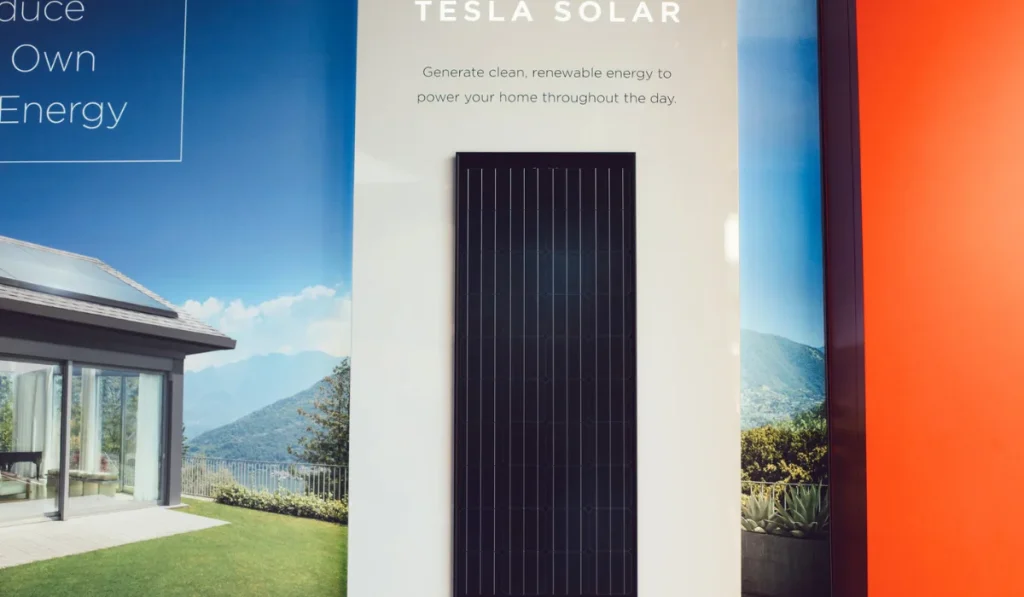Electric vehicle manufacturer Tesla has released its earnings report for the fourth quarter of 2023. However, according to the latest figures, the company’s once-leading solar panel business is in decline, while its energy-storage division – responsible for making utility and home batteries – is booming and is likely to be the growth engine for the rate of deployments and revenue in 2024.
Tesla Cites High-Interest Rates As Solar Deployments Drop From 59% Year-on-Year

In the report, the automaker revealed that 2023 was the worst-performing year for Tesla Solar since 2020. The company’s solar deployments totaled 223 megawatts (MW) last year, which is down from 348 MW in 2022.
In Q4 2023, Tesla’s solar deployment dropped by 59% year-over-year, from 100 MW in Q4 2022 to just 41 MW in the last quarter. The company cited high interest rates as the reason for the decline. However, this is not a worthy explanation as the shrinkage came despite the US adding 33 gigawatts (GW) of solar capacity in 2023, according to estimates by solar industry group SEIA.
Experts argue that Tesla is the only one to blame for its losses as the company shifted its solar strategy from being an installer to a supplier. Last year, the EV maker laid off some of its installers, even canceling several scheduled solar roof installations.
Tesla’s Energy Generation and Storage Unit Nearly Quadrupled Its Profits In Q4 2023
Meanwhile, despite a performance dip compared to Q3 2023, Tesla’s energy generation and storage business outperformed Q3 2022 by more than double with the unit’s profits nearly quadrupling.
Tesla revealed that its energy storage deployments topped 14,724 megawatt hours (MWh) in 2023, which is up 125% from the previous year. The unit that manufactures and sells Powerwall home batteries and utility-scale Megapacks booked $1.4 billion in revenue for the fourth quarter and $1.1 billion in costs for those sales.
However, the company still expects some volatility in terms of energy deployments quarter by quarter. In Q4 2023, the automaker deployed 3,202 MWh, which is down compared to the three preceding quarters but up when compared to the fourth quarter of 2022.
During the latest earnings call, CEO Elon Musk said he had been predicting for many years that Tesla’s storage business would grow much faster than the car business, and “it is doing that”.
Tesla’s solar business isn’t the giant it once was but the company is tapping into the demand for batteries that can help complement the increasing amount of solar and wind power being installed on power grids across the world.
In the US, the market for utility-scale batteries is projected to grow by 36% to more than 10 gigawatts this year, according to research by Wood Mackenzie. For reference, 1 gigawatt can supply enough power for about 750,000 homes.
Tesla’s EV Business Expected To Have A “Notably Lower” Sales Growth In 2024
The company’s primary business, which is the sale of electric vehicles, is expected to project a “notably lower” sales growth in 2024. This comes after Tesla’s strategy to drive up EV sales through price cuts combined with the cost of bringing the Cybertruck into production put pressure on its overall profits in the fourth quarter.
While the automaker managed to continue to expand sales and delivered a record 1.8 million EVs in 2023, it hasn’t reflected in the profit growth or revenue of the company. Even as vehicle deliveries grew, Tesla’s profits narrowed, largely due to the price cuts aimed at driving sales and the increased production costs for its newer models.
